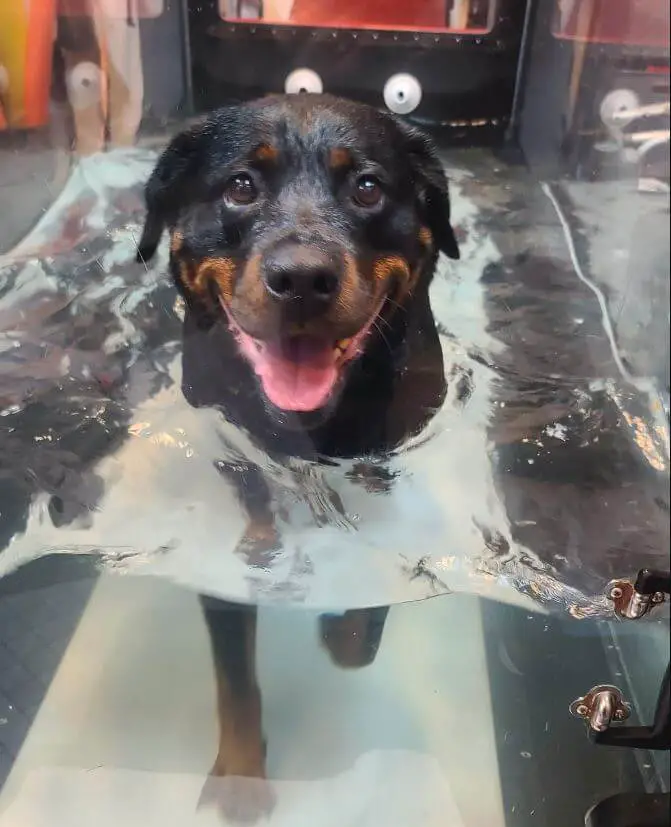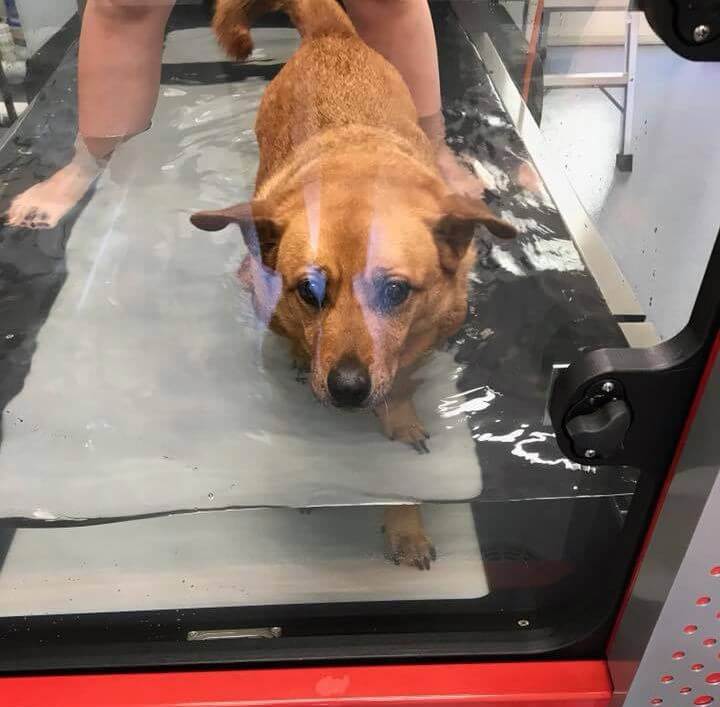In the world of canine physical therapy, a growing trend is making waves—hydrotherapy for dogs. Just as hydrotherapy has proven benefits for human rehabilitation, it’s becoming increasingly recognized as a valuable therapeutic tool for dogs. In this article, we’ll dive into the world of hydrotherapy, exploring its benefits, methods, and why it’s gaining popularity as a go-to treatment option for a variety of canine conditions.

Understanding Hydrotherapy for Dogs:
Hydrotherapy involves using water to aid in the rehabilitation and conditioning of dogs. This therapy takes advantage of water’s unique properties, such as buoyancy and resistance, to facilitate movement and build strength without subjecting the body to excessive stress or strain.
Benefits of Hydrotherapy for Dogs:
- Joint and Muscle Rehabilitation: Hydrotherapy allows dogs to exercise and move their joints without bearing full weight, making it particularly beneficial for dogs recovering from surgeries or suffering from arthritis.
- Improved Muscle Strength: The resistance of water requires dogs to use more effort to move, leading to improved muscle tone and strength.
- Pain Management: The warm water used in hydrotherapy can help alleviate pain, reduce inflammation, and relax muscles.
- Cardiovascular Fitness: Hydrotherapy sessions can provide cardiovascular exercise that is gentle on joints, contributing to overall fitness.
- Weight Management: For overweight dogs, hydrotherapy provides a low-impact workout that aids in weight loss and reduces stress on joints.
- Enhanced Range of Motion: Hydrotherapy helps increase joint flexibility and range of motion, promoting better mobility.

Types of Hydrotherapy for Dogs:
- Underwater Treadmill: Dogs walk or swim on an underwater treadmill, allowing controlled exercise while adjusting the water level to their specific needs.
- Swimming: In a swimming pool with a therapist’s guidance, dogs swim and exercise while benefiting from the water’s buoyancy.
- Hydrotherapy Pools: Specifically designed pools provide a controlled environment for dogs to swim, exercise, and receive therapeutic treatments.
Choosing a Qualified Hydrotherapist:
When considering hydrotherapy for your dog, it’s essential to work with a trained and certified hydrotherapist. Look for professionals with experience in canine rehabilitation and hydrotherapy.
Consultation with a Veterinarian:
Before starting any hydrotherapy program, consult your veterinarian. They can determine if hydrotherapy is suitable for your dog’s specific condition and provide recommendations for the best course of treatment.

Hydrotherapy for dogs is more than just a trend—it’s a valuable tool in canine physical therapy that offers numerous benefits. From joint rehabilitation to pain management and improved overall fitness, hydrotherapy is making a significant impact on dogs’ well-being. As this practice gains recognition, it’s becoming an essential option for pet owners seeking safe and effective rehabilitation for their furry companions. With the guidance of qualified professionals, hydrotherapy can contribute to a happier and healthier life for dogs of all ages and conditions.
